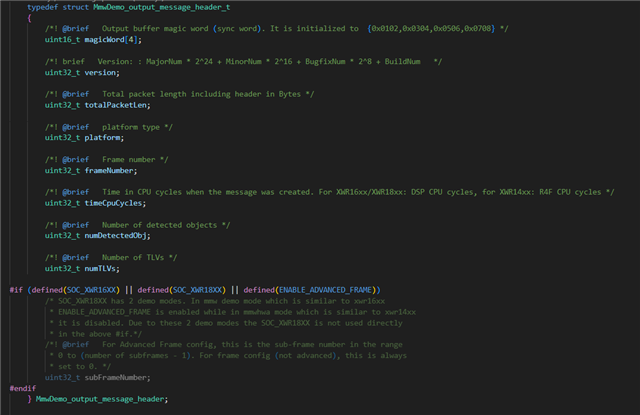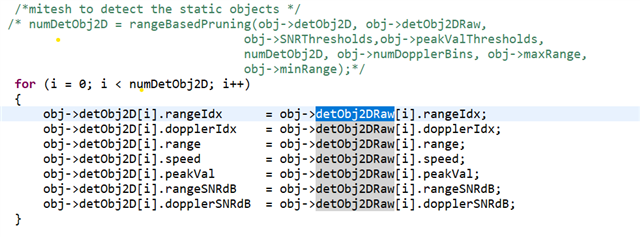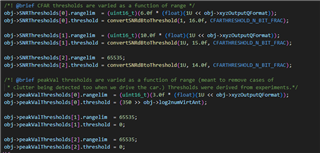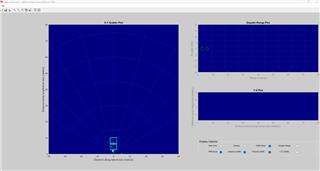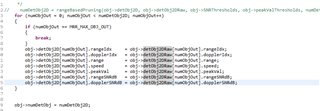Other Parts Discussed in Thread: UNIFLASH, AWR1843, AWR1843AOP, AWR1843BOOST
Tool/software:
I am currently working with the AWR1843AOPEVM radar sensor and following the Auto MRR User's Guide. I have successfully flashed the xwr18xx_mrr_demo.bin file located at
C:\ti\radar_toolbox_2_20_00_05\source\ti\examples\ADAS\medium_range_radar\
In the file "mrr_config_consts.h" there are code line that are enable modes

I am analyzing the mrr_config_consts.h file and would like to understand the impact of enabling different radar modes on the packet data.
If I uncomment #define SUBFRAME_CONF_MRR_USRR, which enables a multi-mode operation (MRR followed by USRR20), what type of data will be included in the packet?
Similarly, if I uncomment only #define SUBFRAME_CONF_MRR (MRR80 mode), what will be the structure and content of the packet data in this case?
Could you please clarify the differences and the type of data included in both configurations?
Looking forward to your insights.
Here is the setup I am using:
CCS version: 12.8
SDK version: 3.6
Radar module: AWR1843AOPEVM
UniFlash version: 8.8


